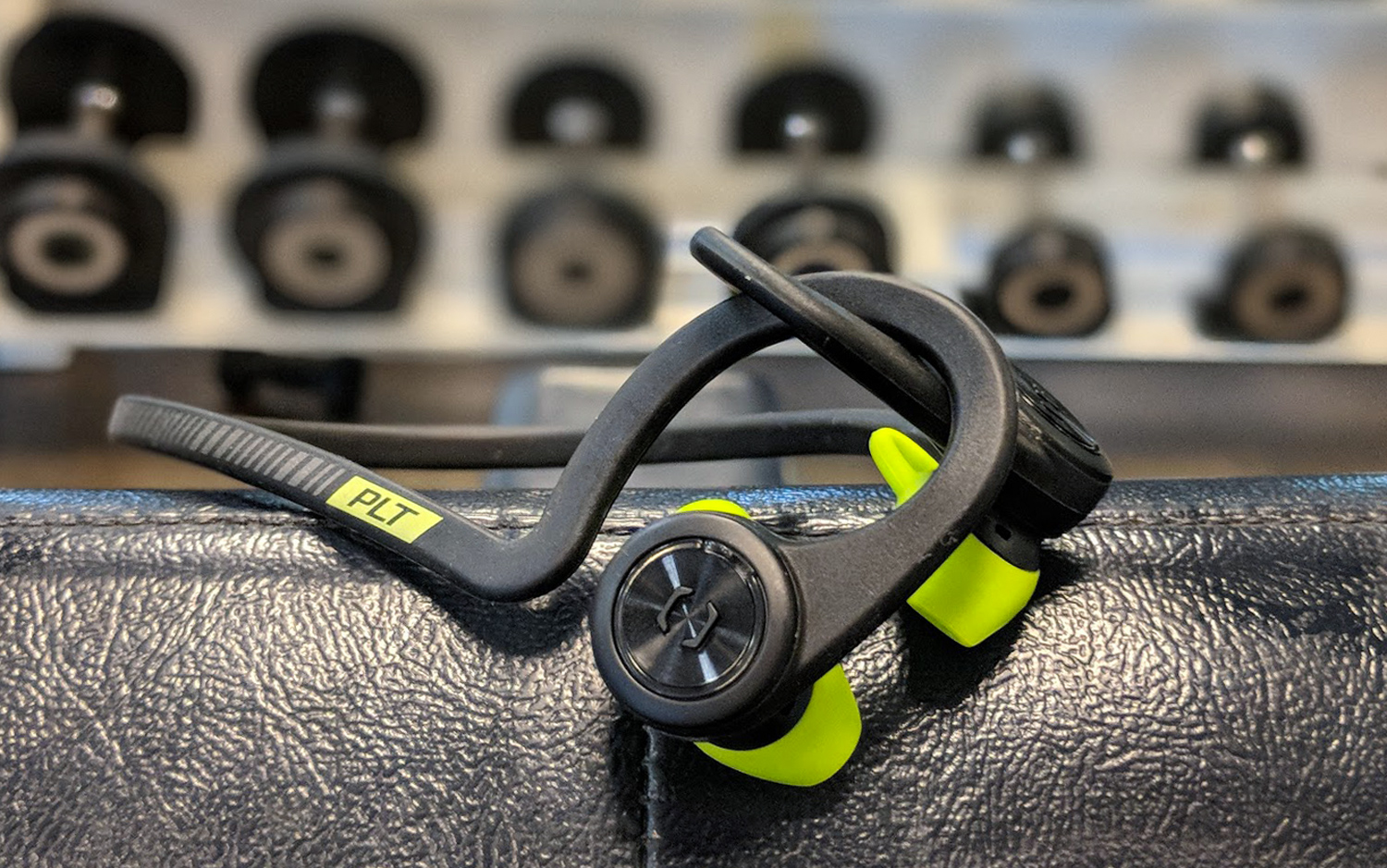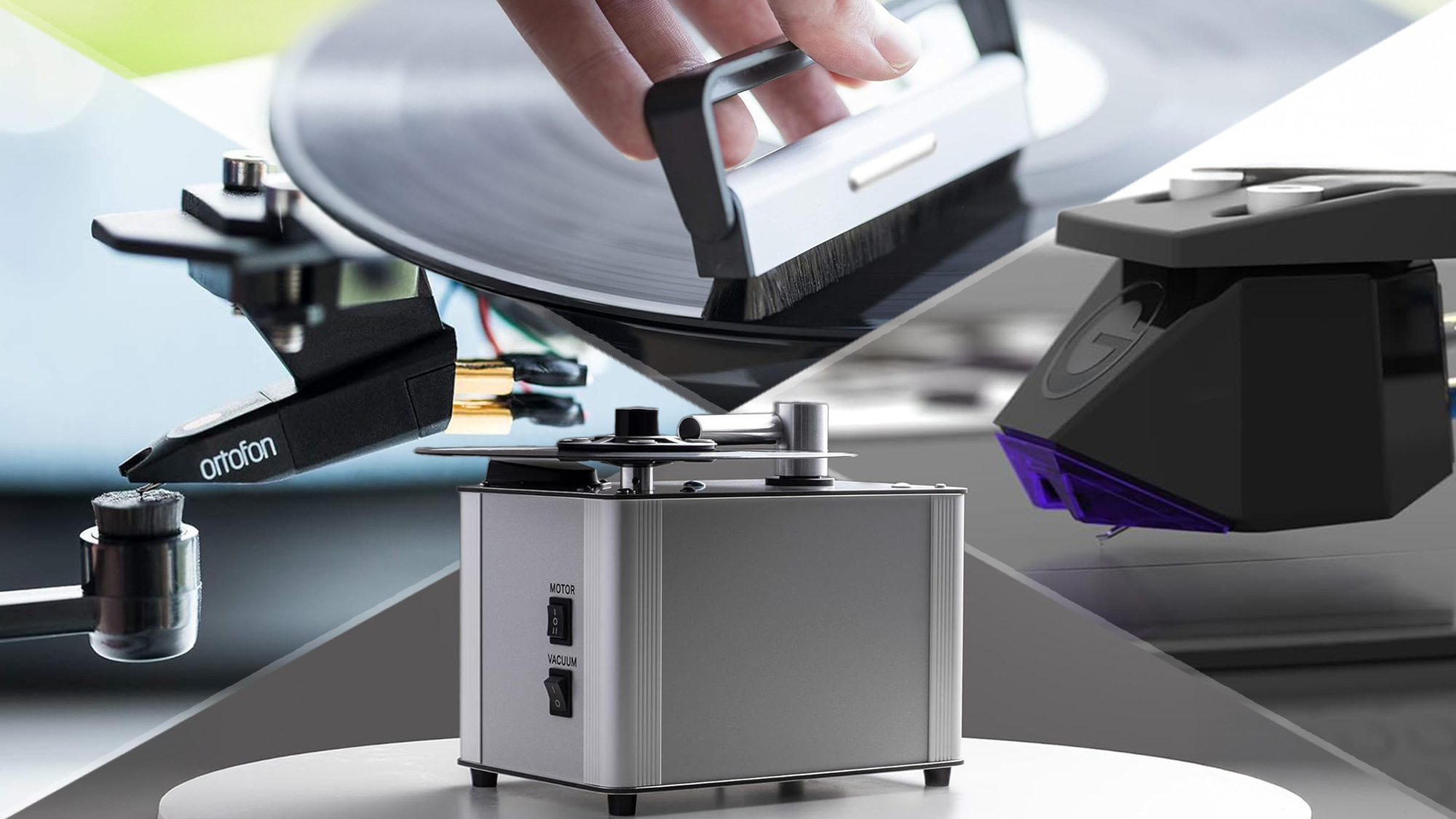Tom's Guide Verdict
The Plantronics BackBeat Fit Boost Edition offers steady bass and ergonomics but not much else to warrant its high expense.
Pros
- +
Flexible, sturdy design
- +
Improved bass response
- +
Good call quality
- +
Portable and waterproof charging pouch
Cons
- -
Mids and highs are weak
- -
Inconvenient control setup
- -
No additional ear tips
- -
Too expensive
Why you can trust Tom's Guide
When wireless fitness headphones became a thing, Plantronics was at the forefront of the movement. The company's BackBeat Fit series has been a staple of the product category for the past four years. With the recent launch of a sportier version, the BackBeat Fit Boost Edition, the company looks to stay competitive by making indistinct enhancements to its mainstream design and soundstage — at a steeper price. The result: an active-listening experience with several trade-offs.
Design and Case
Plantronics returns to the necklace-style headphones with the BackBeat Fit Boost Edition. Targeting fitness enthusiasts, the headphones have a versatile form factor built from flexible and robust materials to endure whatever abuse you put them through.
Adaptability is the modus operandi of these headphones, with the super-bendable, rubbery neckband looping up over the ears for a fastened ear grip. The ear tips feature what Plantronics calls an open design with a nozzle that rests on the ears and lets you hear your surroundings while working out. It's a thoughtful gesture that caters more to outdoor exercisers but affects overall sound quality.
Unlike the JBL UA Sport Wireless Flex, the BackBeat Fit Boost Edition is IP57-certified, so it's dust, sweat and waterproof. I put the headphones through a week's worth of sweat-inducing cardio and noted how well they withstood perspiration. I left them around the sink area every other day and rinsed them off after workouts to test their water-repelling capabilities. No harm done after either test.
Adaptability is the modus operandi of these headphones, with the super-bendable, rubbery neckband looping up over the ears for a fastened ear grip.
The accompanying charging pouch is IPX5-rated as well. It's made of a breathable, sport-mesh fabric that's durable and water-resistant to protect the headphones and internal battery from inadvertent drops.
Comfort and Fit
As a runner, I desire something lightweight that won't weigh me down the longer I wear it. The BackBeat Fit Boost Edition fit the bill, with its slender necklace feeling airy, functional and, most importantly, comfortable.
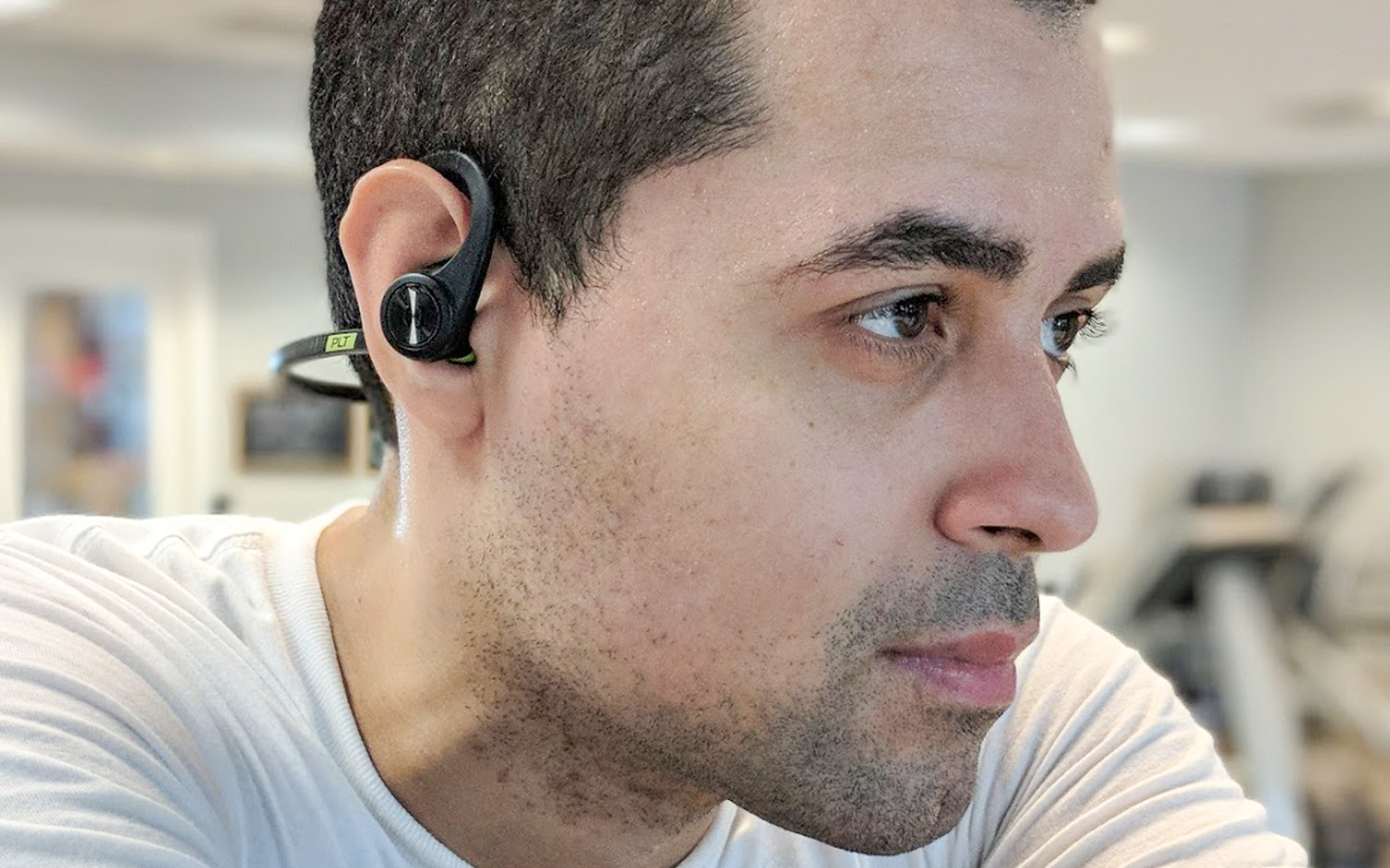
At 0.8 ounces, the BackBeat Fit headphones are significantly lighter than fan faves like the Beats Powerbeats3 (6.9 ounces). Carrying them around my neck or in hand was no sweat after speeding through 5Ks every other day.
Get instant access to breaking news, the hottest reviews, great deals and helpful tips.
Now, if only the earbuds themselves felt as cozy. Plugging them in to my ears required a bit of maneuvering, mainly due to the looseness of the ear tips that come preinstalled on the earbud ends. Swapping them out for other ear tips was out of the question, as only one set comes shipped with the unit. No, seriously, you get only one set.

Now, if only the earbuds themselves felt as cozy. Plugging them in to my ears required a bit of maneuvering, mainly due to the looseness of the ear tips that come preinstalled on the earbud ends.
Annoying as that sounds, my bigger issue was that the left earbud constantly pinched the concha and fatigued my ears within an hour of listening. Pressing the play/pause button only increased the pain, because it required pushing the earpiece deeper into my ear. I wouldn't recommend these for leisure or travel.
Controls and Setup
Plantronics makes the noble effort of splitting multifunctional duties between the two earpieces — each one housing a big and a small button. It's a cumbersome setup that makes control management difficult.
MORE: Best Music Apps for Rocking Out
The large button on the left side is dedicated to playback (play/pause) and track navigation, and the small button on the top is used to control volume. The large button on the right side is reserved for answering and ending phone calls, while the small button powers the unit on and off and pairs it. The mini-toggles are too tiny and difficult to locate, and they limit functionality. Most times, the headphones couldn't determine whether I was raising (one tap) or lowering (hold down) the volume. Eventually, I settled on using the volume rockers on my smartphone.
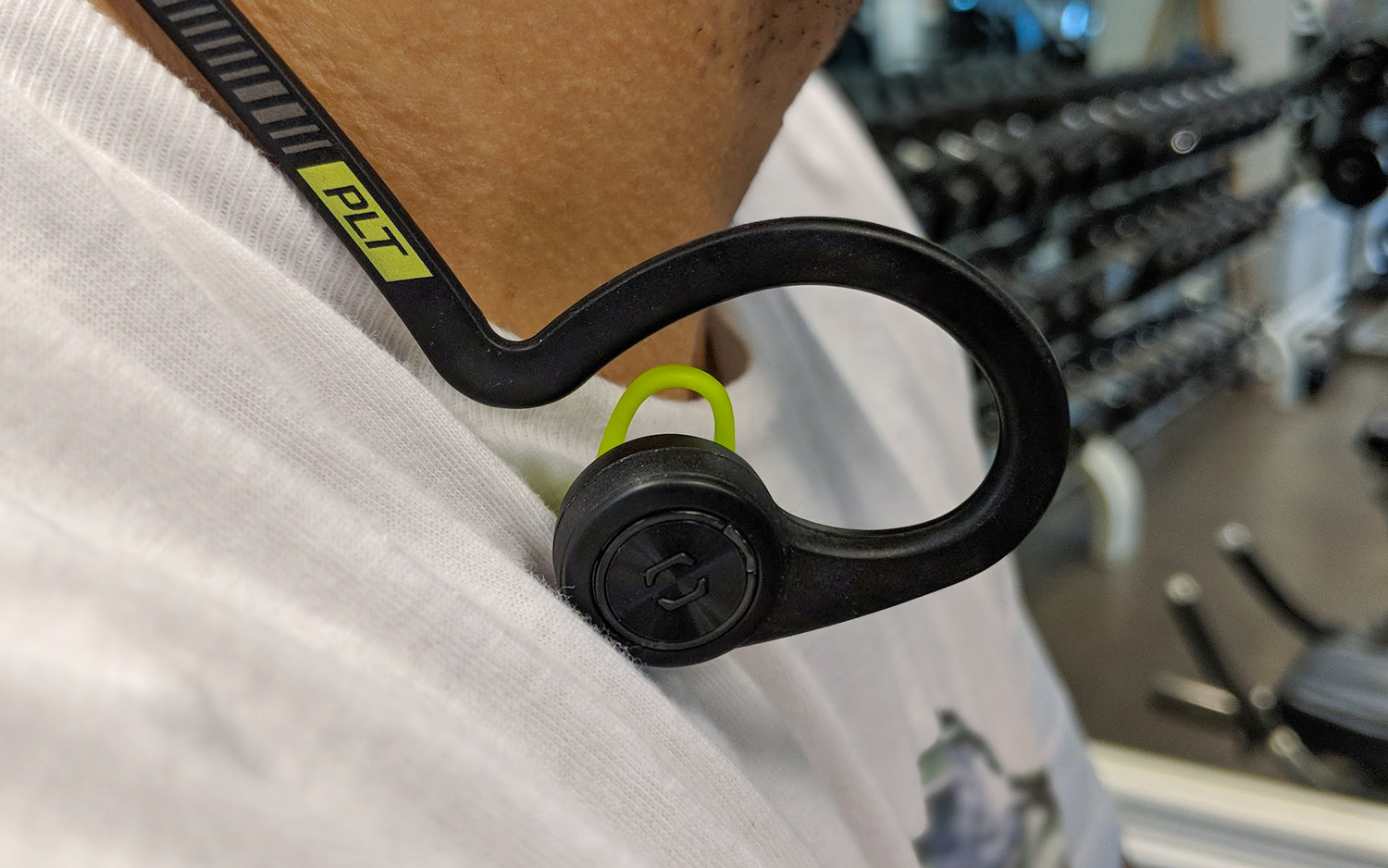
On the plus side, the large buttons do provide great responsiveness and tactility. This ensures that commands are executed lag free. It's also cool that the headphones give you a voice prompt for battery life when you click the small right button.
Pairing the headphones is simple. Turn on the unit; then hold down the power button for a few seconds, and you'll see the circular LED blink red and blue. Enable the Bluetooth mode on your preferred device, select the Pair New Device menu, and choose PLT_BBFIT from the available devices list.
App Support
A companion app is available and compatible with all BackBeat Fit models. However, it serves no purpose other than letting you access a digital copy of the user manual and check battery life. A six-month trial membership for the Pear coaching app does come bundled with the purchase, offering unlimited access to 12 different exercises, so at least you get something extra to encourage mobile use.
Audio Quality
While these headphones deliver the strong bass depth that most adrenaline junkies crave, I found the overall sound quality on the BackBeat Fit Boost to be dull and inconsistent.
Kanye West's "Runaway" showcased how solid the lows were on these headphones, easily pulling me into its groaning, yet addictive bass line. The rumbling drums and percussion were well-balanced, even when I cranked volume to the max. I got a slightly better performance on Green Day's "Warning," with the Fit Boost pumping out a tight bass line and guitar riff. The bass was a vast improvement from what the BackBeat Go 3 produced and not overdone as on the Beats Powerbeats 3.
MORE: Best Headphones and Earbuds for Enjoying Music
As great as the lows were, the Fit Boost did little to convince me it could handle mids and highs at the same level. Many of the tunes I tested with sub-bass content performed adequately, though I stumbled upon certain songs with unique vocal range, like Empire of the Sun's "Walking on a Dream," that sounded muddled. The Bose QuietControl 30 does a better job of balancing bass and vocals.
Highs were nearly absent on the headphones. Take Blue Oyster Cult's "(Don't Fear) The Reaper" for instance, a song remembered most in more recent years for its cowbell . The bell was barely audible, and had pop culture not put me onto that instrument's inclusion in the record (thank you SNL), I wouldn't have heard it. Switching over to The Police's "Roxanne," the steady hi-hat does take precedence over most of the other instruments, but still sounds a bit sparse.
While these headphones deliver the strong bass depth that most adrenaline junkies crave, I found the overall sound quality on the BackBeat Fit Boost to be dull and inconsistent.
The BackBeat Fit Boost Edition doesn't feature active noise cancelling or isolation, which presents a problem for anyone looking to be immersed in their playlists. As mentioned, the open design of the ear tips doesn't seal off the ear canal and prevent sound leakage, making ambient noise more noticeable.
Call Quality
One unsung attribute of the Backbeat Fit Boost Edition is call quality. The calls I screened provided good clarity, both indoors and outdoors. Even when there was background noise, like when I was walking through the streets, callers heard me clearly, with no distortion. Some couldn't tell that I was using a Bluetooth headset.
This comes as no surprise, because Plantronics has built an amazing rep for creating some of the best mic-equipped headsets on the market.
Battery Life and Bluetooth
In my trial period, the headphones gave me about 8 hours of battery life on moderate use. They allowed me to enjoy music when exercising for four to five days before needing a recharge. I found that blasting music at the max volume drained the battery faster, sometimes dropping it by 20 percent within an hour.
MORE: 12 Cheap Earbuds (Under $20) Ranked from Best to Worst
Thankfully, the headphones support speed-charging, with a 15-minute charge earning an hour of play. Unlike other headphones, the BackBeat Fit Boosts ship with a full charge.
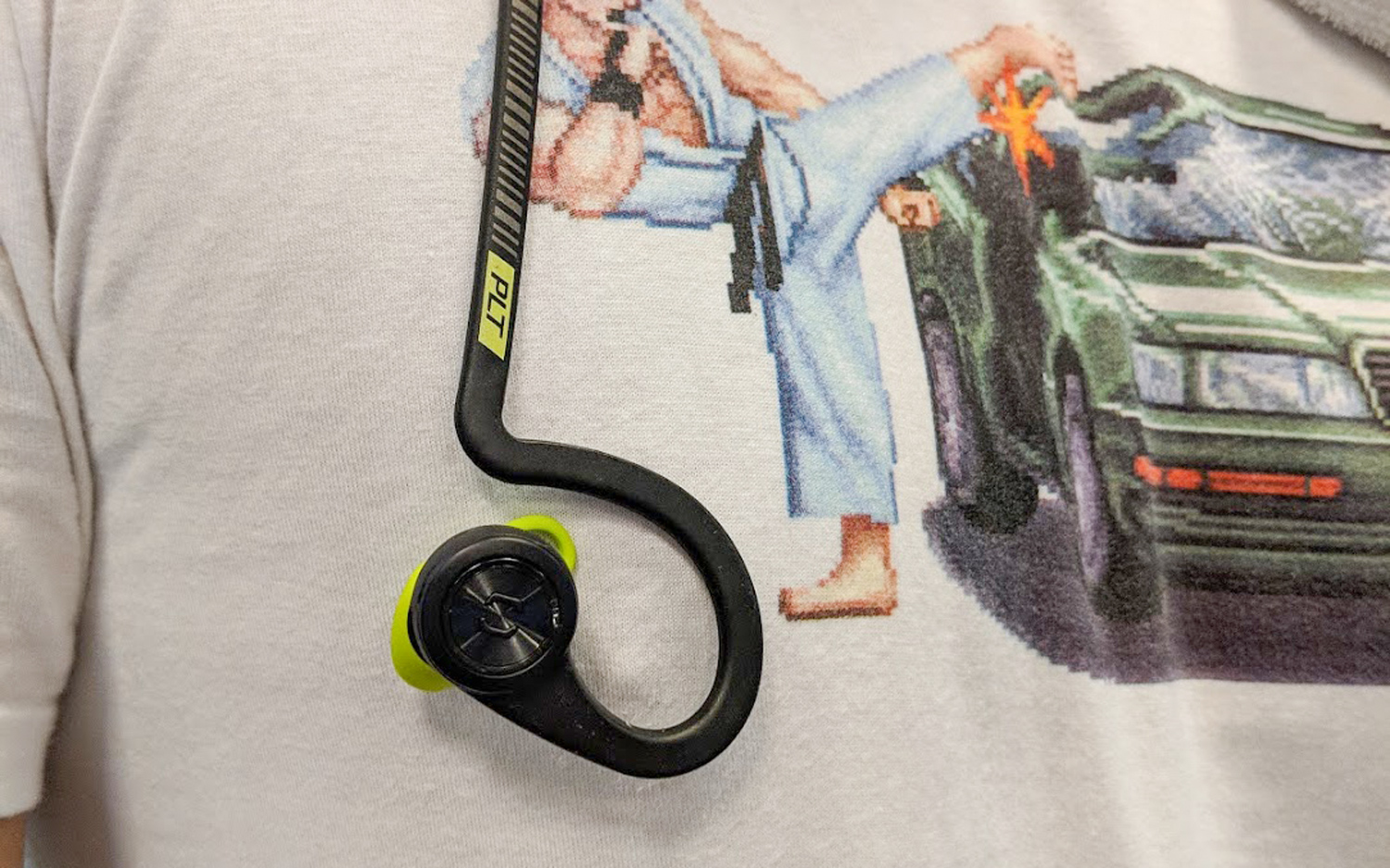
As these are a next-gen model, I figured Plantronics would have updated the Bluetooth protocol. Instead, the company stuck with Bluetooth 3.0, which is pretty outdated considering that most current devices use Bluetooth 5.0. But, to my surprise, connectivity held up well when I was near my smartphone. Stepping away from its 33-foot range, I saw little dropout.
Bottom Line
As a fan of the original BackBeat Fit, I get no pleasure in calling the Boost Edition a letdown. Outside of a few new colors, and what look to be minor tweaks to the sound profile, it's essentially the same device as its predecessor, with similar performance issues.
Every aspect of the headphones feels compromised: the flexible neckband with uncomfortable earpieces, impactful bass with dull mids and highs, and a portable battery pouch with no extra accessories (basically, earbuds). Taking all of this into account, the BackBeat Fit Boost Edition does little to justify its $160 price. But if you're looking for a pair of incredibly light, durable headphones for exercising, the Plantronics BackBeat Fit Boost headphones are an OK choice.
Credit: Regan Coule/Tom's Guide
A lifestyle journalist with an affinity for consumer products, Alex has over a decade of experience and has worked with popular publications such as Complex, Thrillist, Men’s Health, Gear Patrol, AskMen, and Hoop Magazine. He currently focuses on audio, reviewing the most coveted headphones in the market for both Tom’s Guide and Laptop Magazine.
